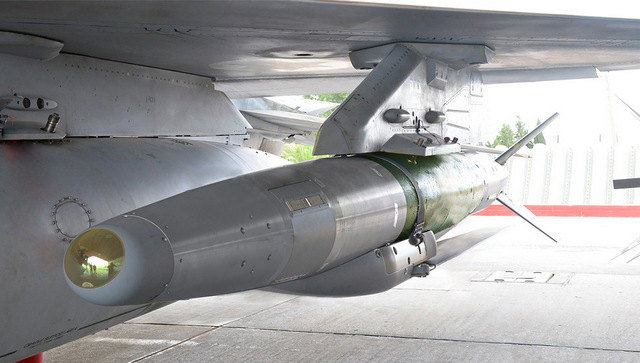The Israeli Air Force’s bombing of Gaza is under the scanner yet again. Videos have emerged on social media purportedly showing that Israel is dropping Smart, Precise Impact, Cost-Effective (SPICE) bombs on densely packed areas. In November, The Wall Street Journal reported that the US was planning to deliver $320 million worth of precision bombs to Israel. The development comes as Israeli troops are fighting fierce battles with Hamas in an expanding offensive into southern Gaza. Tens of thousands of displaced Palestinian civilians have been forced to cram into a city close to the Egyptian border to avoid Israeli bombardment. But what are these SPICE bombs? What’s the controversy surrounding them? Let’s take a closer look: What are they? SPICE bombs are a type of precision-guided weapon fired by warplanes. These bombs are made by weapons manufacturer Rafael USA. The company is owned by Israeli Rafael Advanced Defense Systems.
As per Business Insider, the SPICE bombs convert air-to-ground unguided bombs into precision-guided munitions.
They use advanced electro-optical guidance and the inertial navigation system/global positioning system (INS/GPS) to perform autonomous mid-course navigation. The Rafael website states, “The highly sophisticated and combat-proven SPICE Guidance Kits address the needs of today’s increasingly complex battlefields. They convert 1000 lb and 2000 lb class general purpose and penetration warheads into precision stand-off strike weapons that deliver simultaneous attacks with pinpoint accuracy in a GPS-denied environment.” According to Eurasian Times, SPICE bombs come in three sizes:
- 250
- 1000
- 2000
How do they work? As per India Today, the SPICE bombs comprise two pieces – the first, a camera, attached to the unguided bomb’s head and the other, a fin, to its end. Prior to the mission, all the information about the target including its GPS coordinates and satellite images are fed into the SPICE bomb’s memory chip. The pieces are then placed onto the unguided bombs. The planes then drop the bombs are a pre-arranged spot. Now, the SPICE bomb uses data in the chip – combined with images from the camera – to guide itself to the target.
Rafael says the SPICE 2000 uses a “unique scene-matching algorithm.”
As per Eurasian Times, The SPICE-2000 deployed with a 900-kilogram warhead bomb can create an incredibly deadly weapon that can even penetrate “hardened” targets like weapons storage facilities. Rafael Advanced Defense Systems says these bombs can enable “fully autonomous attack missions with pinpoint accuracy,” as per Business Insider. They are considered highly accurate – claiming an error probability of less than three metres. The Indian Air Force used the SPICE smart bombs during the 26 February 2019 air strike on Balakot in Pakistan. [caption id=“attachment_6199561” align=“alignnone” width=“640”] A building, which residents claim is a madrasa, near to the site of IAF’s air strikes in Balakot, Pakistan. Reuters[/caption] As per Eurasian Times, the Indian pilots dropped at least five such bombs on their targets. Marc Garlasco, who headed up United Nations war-crimes investigations in Afghanistan, Libya, and Syria, told Business Insider, the system is useful in conflict zones that lack GPS. What’s the controversy? As per Eurasian Times, if a SPICE 2000 bomb is dropped on a building it is likely to cause massive destruction and leave no survivors. Experts have expressed worry about collateral damage in Gaza. “When you’re talking about a densely populated area like Gaza, there’s going to be certain concerns about collateral effects, particularly widespread collateral effects,” Garlasco said. “That’s pretty much instant death,” he added.
“No one’s going to survive that.”
Brian Castner of Amnesty International’s Citizen Evidence Lab told Business Insider, “The use of explosive weapons generally in populated areas can be really problematic because they just have wide area effects.” “Even if Israel identifies and hits an intended target the surrounding damage that they do either to infrastructure or to civilians is much greater with a larger weapon,” Castner added. More than 15,800 Palestinians – many of them children – have been killed by Israel’s military response in Gaza, according to figures from Gaza health officials deemed reliable by the United Nations. The United Nations in November said that Gaza is becoming a “graveyard for children.” In Geneva, the UN human rights chief warned the situation was “apocalyptic” with the risk that serious rights violations were being committed by both sides. Leaders of the Group of Seven nations including Israel’s close ally the United States called for further humanitarian truces “to address the deteriorating humanitarian crisis in Gaza and minimise civilian casualties”. The United Nations Security Council received a UAE-drafted resolution on Wednesday that demanded an “immediate humanitarian ceasefire” with a vote sought on Friday. Israel unleashed its military campaign in response to a surprise 7 October attack by Hamas fighters who rampaged through Israeli towns, killing 1,200 people and seizing 240 hostages, according to Israel’s tally. With inputs from agencies


)

)
)
)
)
)
)
)
)



